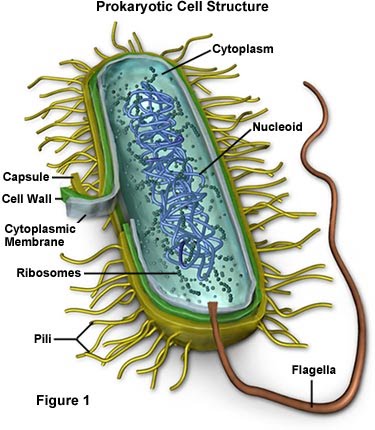⚙️ Cell Structure
Prokaryotic cells
Eukaryotic cells
Prokaryotic cells
Prokaryotes do not have a nucleus like eukaryotes do. Their DNA is not membrane-bound, just free in the cytoplasm. The extra features of prokaryotic cells vs. eukaryotic cells you must learn are:
-the cytoplasm overall does not contain membrane-bound organelles such as mitochondria and endoplasmic reticulum
-prokaryotic ribosomes are smaller than their eukaryotic counterparts; due to their size (and the centrifugation level they separate from the cell at) they are termed 70S ribosomes; the bigger eukaryotic ribosomes are 80S
-as previously covered, and their primary defining element, they lack a nucleus; instead, their DNA is a single circular molecule freely present in the cytoplasm and not associated with any proteins such as histones in eukaryotes; however, the general area where the genetic material hangs out is termed a nucleoid
-they have a cell wall which contains a special glycoprotein called murein (also known as peptidoglycan)

Some prokaryotes also go further to have some specialised parts, some seen in the diagram:
-one or more plasmids which are also circular DNA loops but much smaller; these can be exchanged between cells or even between different species as they can carry genes for antibiotic resistance
-a capsule made of polysaccharides as their outermost layer (on top of the cell wall on top of the plasma membrane)
-one or more flagella which aid in locomotion
Eukaryotic cells
The core components of cells are the outer membrane, the cytoplasm (substance inside which contains all other stuff) and the nucleus (contains DNA). All the other stuff is made up of various…

